How many seats to place around a table
All of our Tables feature a seating-plan diagram on their product page. These diagrams act as a useful tool for quickly identifying the maximum number of chairs which can be placed around each table model… let’s have a look at how these technical diagrams are created.
● It is important to note that these diagrams determine the “maximum number of seats”, rather than the “ideal number”: the ideal number is almost always lower than the maximum, especially for our Rectangular Tables and our Oval Tables.
● The design of any table is enhanced when the Chairs around it allow for a sufficient view of the table itself.
● Our opinion is as follows: “if in doubt, it’s better to select two fewer fixed chairs and 2 more folding chairs”.
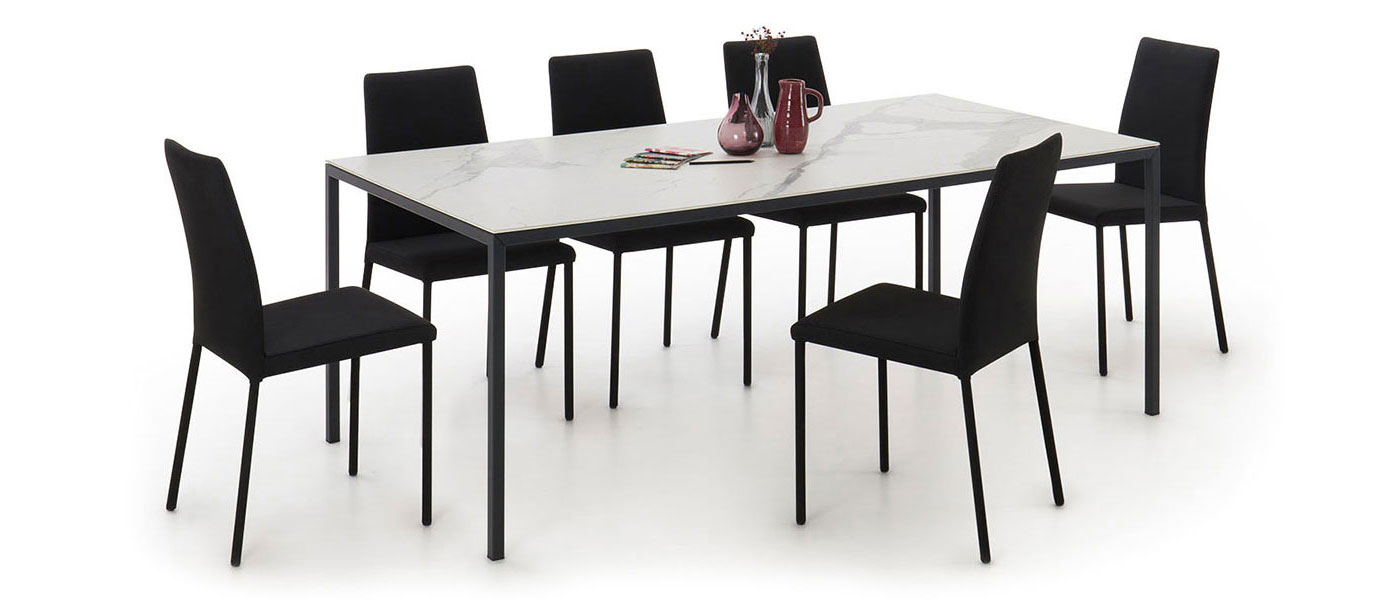
This will allow you to make the most out of your table and chairs. The cost of a good fixed chair for a kitchen or dining room is also higher than that of a good Folding Chair... It is therefore far better, both economically and aesthetically, to reduce the amount of fixed chairs in favour of folding chairs which can be folded up and put away when not in use.
● When choosing a table and chairs, we must consider the measurements of the chairs and the possibility that they will have armrests.
● Another factor to consider is the space taken up by the legs of the table, particularly with our Tables which have legs positioned at each corner, or our tables with particularly large legs.
All of these factors have the potential to create exceptions to the rules laid out below. However, there is information on every product page for our Tables and Chairs, and our Customer Service team is always available for further information.
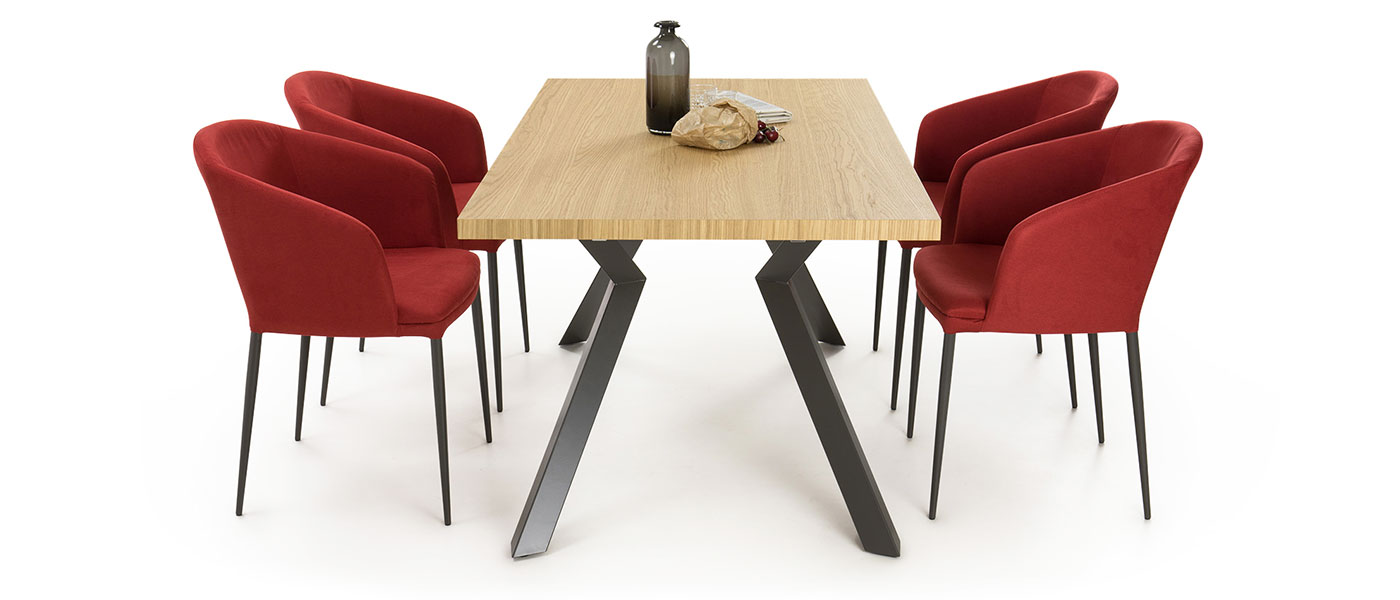
Rectangular Tables
The Rectangular Tables have 2 long sides and 2 short sides: on the long sides, the minimum space per person is 55cm, while on the short sides the minimum space is 70cm. The reason for this is that the person sitting at the end of the table is often quite close to someone sitting on the long side, and it is important that they both have sufficient space.
RECTANGULAR TABLE 120 x 80
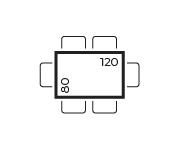
2 long sides of 120 and 2 short sides of 80.
120 ÷ 55 = 2,18 places which we round off to 2
80 ÷ 70 = 1,14 places which we round off to 1
2 + 2 + 1 + 1 = 6 places (maximum number)
RECTANGULAR TABLE 180 x 100
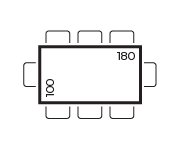
2 long sides of 180 and 2 short sides of 100
180 ÷ 55 = 3,27 places which we round off to 3
100 ÷ 70 = 1,42 places which we round off to 1
3 + 3 + 1 + 1 = 8 places (maximum number)
Square Tables
The Square Tables have 4 equal sides: the minimum space per person on each side is 70cm (as with the short sides of the Rectangular Tables, each person is usually close to a corner and therefore close to another person). We normally have 4 people sitting at a square table (1 per side). However, for tables larger than 140 it is possible to have 2 people per side, for a total of 8 people.
SQUARE TABLE 90 x 90
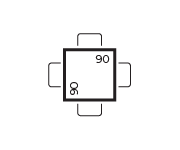
4 sides of 90
90 ÷ 70 = 1,28 places which we round off to 1
1 + 1 + 1 + 1 = 4 places (maximum number)
SQUARE TABLE 130 x 130
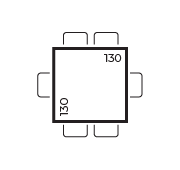
4 sides of 130
130 ÷ 70 = 1,85 places which we round off to 1
However, we think it’s a pity to “waste space” by rounding down so specifically. In this case, we can apply the same criteria as with the rectangular table: on two of the sides we follow the rules for the short sides (minimum space of 70cm) and on the other sides we follow the rules for the long sides (minimum space of 55cm).
130 ÷ 55 = 2,36 places which we round off to 2
1 + 1 + 2 + 2 = 6 places (maximum number)
SQUARE TABLE 140 x 140
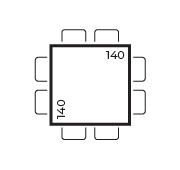
4 sides of 140
140 ÷ 70 = 2 places
2 + 2 + 2 + 2 = 8 places (maximum number)
Round Tables
The beauty of the Round Tables is the absence of corners: The minimum space per person for the Round Tables is 60cm (circumference = table diameter x 3.14).
ROUND TABLE Ø 90
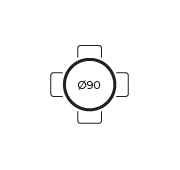
90 x 3,14 = 282,6
282,6 ÷ 60 = 4,71 which we round off to 4 places
ROUND TABLE Ø 130
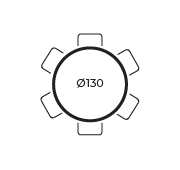
130 x 3,14 = 408,2
408,2 ÷ 60 = 6,8 which we round off to 6 places
ROUND TABLE Ø 160
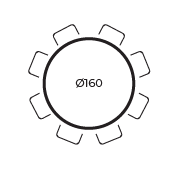
160 x 3,14 = 502,4
502,4 ÷ 60 = 8,37 which we round off to 8 places
Oval Tables
The Oval Tables combine the distribution of space typical of the Rectangular Tables, with the absence of corners associated with the Round Tables: The minimum space per person at an Oval Table is 58cm, along the perimeter of the oval.
To calculate the perimeter of the oval, you need the measurements of the 2 axes: an oval table of 180 x 90 cm has an axis A of 180cm and an axis B of 90cm.
Perimeter of Oval = Square Root [(A/2 squared + B/2 squared) / 2] x 6.28
For aesthetic reasons, we don’t recommend an odd number of places at an oval table. Additionally, if the oval is very long we don’rt recommend positioning any seats at the head of the table, for ergonomic reasons.
OVAL TABLE 180 x 90
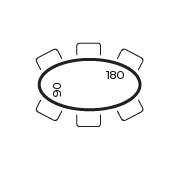
A = 180 A ÷ 2 = 90
B = 90 B ÷ 2 = 45
(90x90 + 45x45) = (8.100 + 2.025) = 10.125
10.125 ÷ 2 = 5.062,5
Square Root 5.062,5 = 71,15
71,15 x 6,28 = 446,82
446,82 ÷ 58 = 7,7 which we round off to 6 places
OVAL TABLE 200 x 100
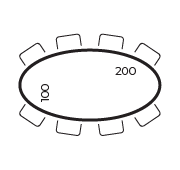
A = 200 A ÷ 2 = 100
B = 100 B ÷ 2 = 50
(100x100 + 50x50) = (10.000 + 2.500) = 12.500
12.500 ÷ 2 = 6.250
Square Root 6.250 = 79,05
79,05 x 6,28 = 496,43
446,82 ÷ 58 = 8,55 which we round off to 8 places


